Contents
Model Performance: Case 1 – Fault Event
In this case a remote fault is applied to bus 12 for a duration of 6 cycles (0.1 sec).
Vestas: Type IV – Case 1 and SCR=5

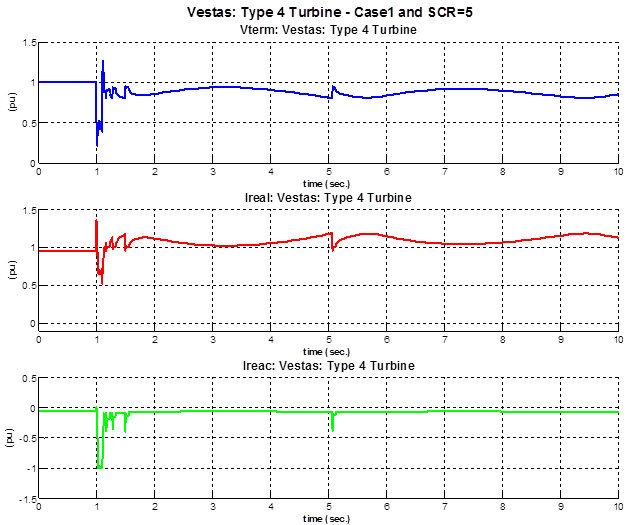
Vestas: Type IV – Case 1 and SCR=10
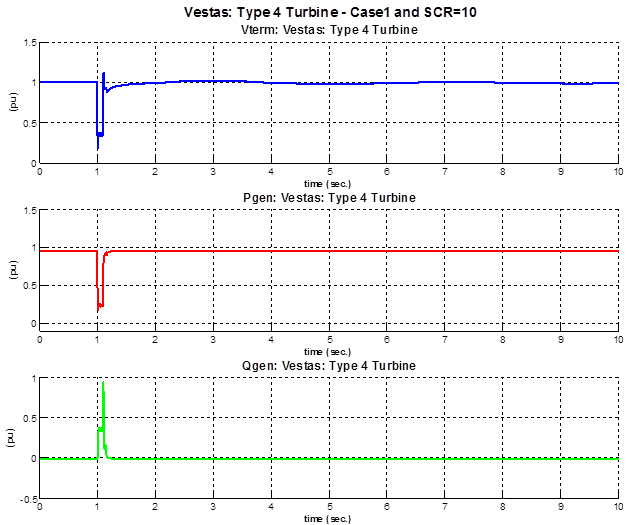

For the SCR=5 case, after the fault is cleared (tripped line) the reactive power from the turbine and grid is not sufficient to recover the voltage back to the pre-fault value leading to voltage oscillation. At time=5 sec the voltage drops below a threshold leading to the triggering of the Advanced Grid Option (AGO) – therefore a voltage bump around that time. For the SCR=10 case the grid is stiff enough to provide sufficient reactive power to support the voltage recovery. Thus, a much smother voltage behavior in this case.
Model Performance: Case 2 – Under-Frequency Event
In this case a under frequency event is created by tripping the 100 MVA generation unit at bus 20.
Vestas: Type IV – Case 2 and SCR=5
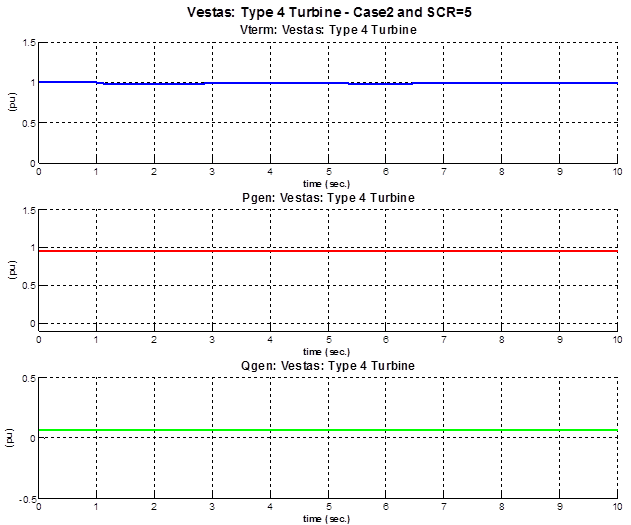
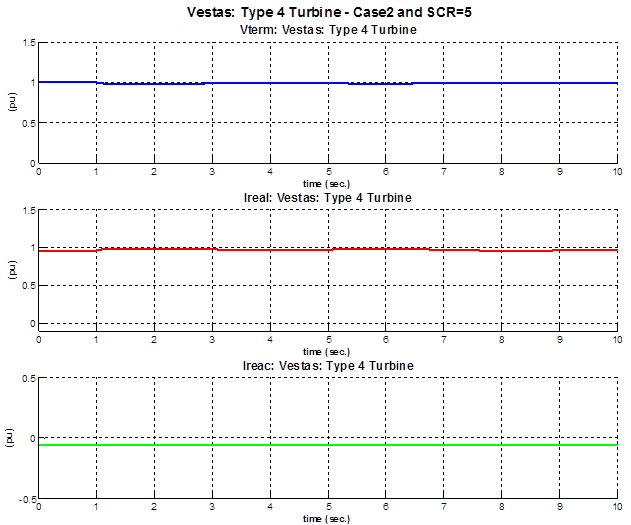
Vestas: Type IV – Case 2 and SCR=10
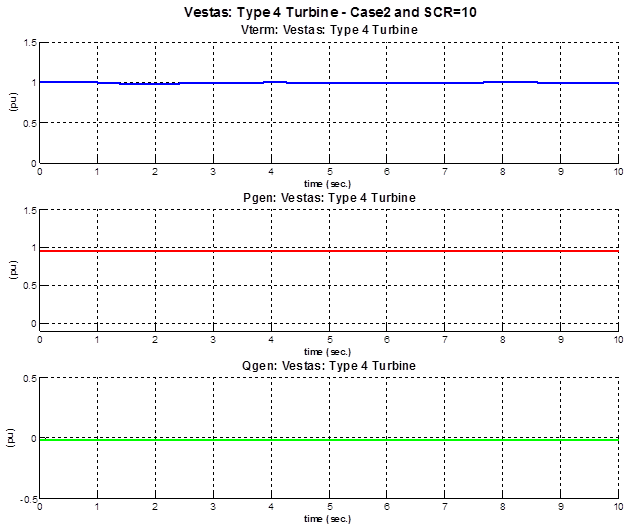

Model Performance: Case 3 – Over-Frequency Event
In this case a under frequency event is created by tripping the 100 MVA load at bus 11
Vestas: Type IV – Case 3 and SCR=5
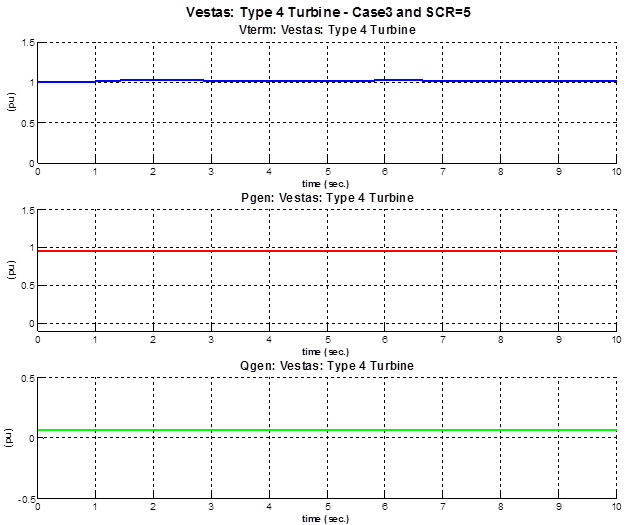
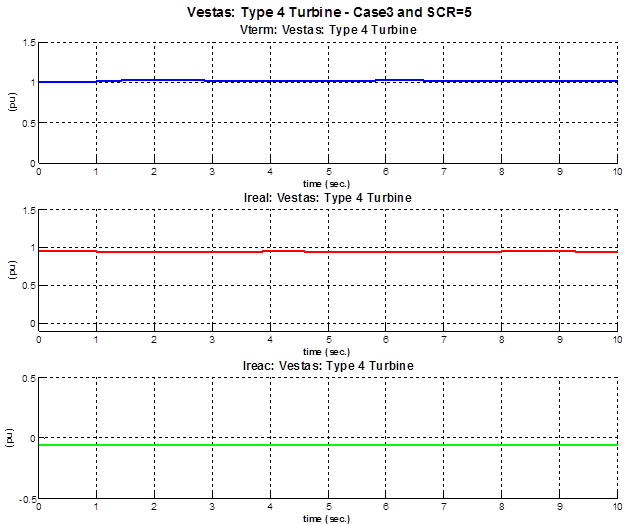
Vestas: Type IV – Case 3 and SCR=10
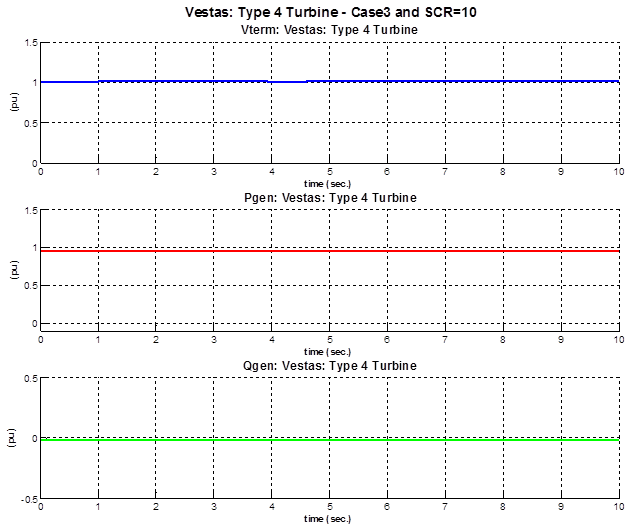
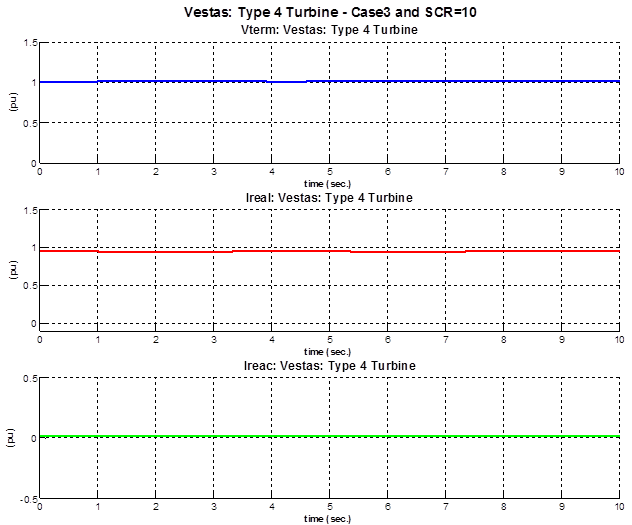
Parameterization – PSLF Environment
The parameter values shown in the table resulted from a compromise between the simulated cases (i.e. SCR 5 and SCR 10) and network conditions (i.e. fault, under- and over frequency)
|
There are three generic wind turbine models in PSLF for a type 4 wind turbine (WT4). These models are wt4g, wt4t, and wt4e. The wt4g model includes the generator and converters dynamics. The wt4t model includes the wind aerodynamic model and the wind turbine model. Finally, the wt4e model contains the real and reactive control models. The values for the parameters resulted from a compromise between the two cases (SCR 5 and SCR 10). The set of parameters had to be tuned to satisfactory match the results of dynamic simulation for the VSM and the generic WT4 model for both SCR cases. | |||||||||||||||||||||||||||||||||||||||||||||||||||||||||||||||||||||||||||||||
Parameterization: Case 1 – Fault Event
Parameterization of WT4 vs Vestas: Type IV – Case 1 and SCR=5

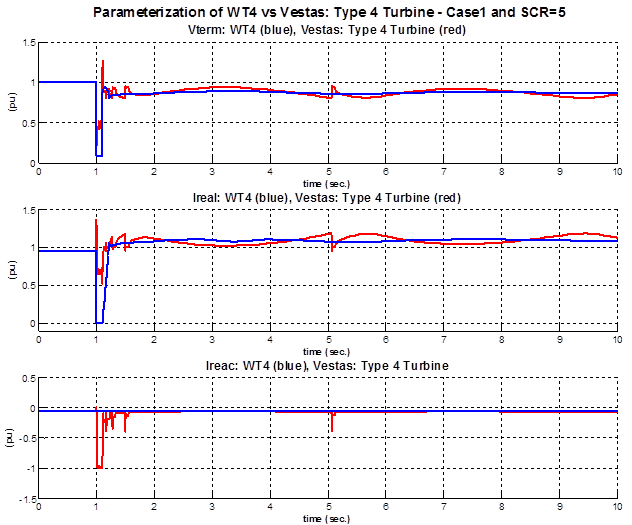
Parameterization of WT4 vs Vestas: Type IV – Case 1 and SCR=10
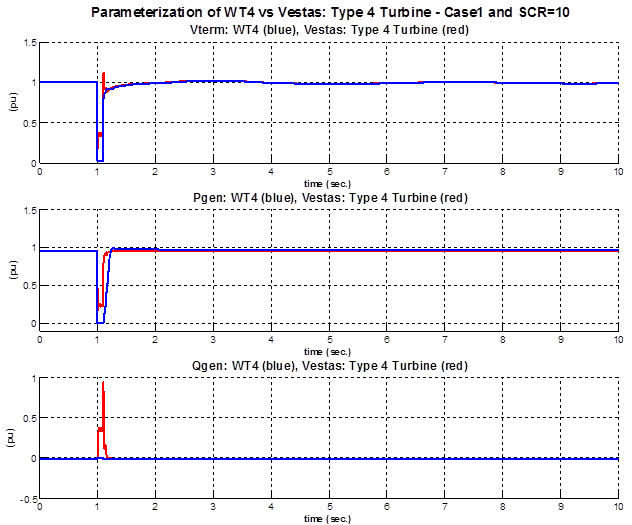
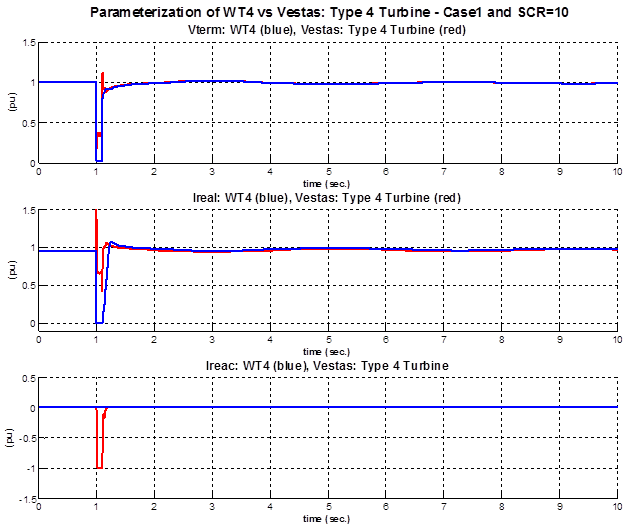
Parameterization: Case 2 – Under-Frequency Event
Parameterization of WT4 vs Vestas: Type IV – Case 2 and SCR=5

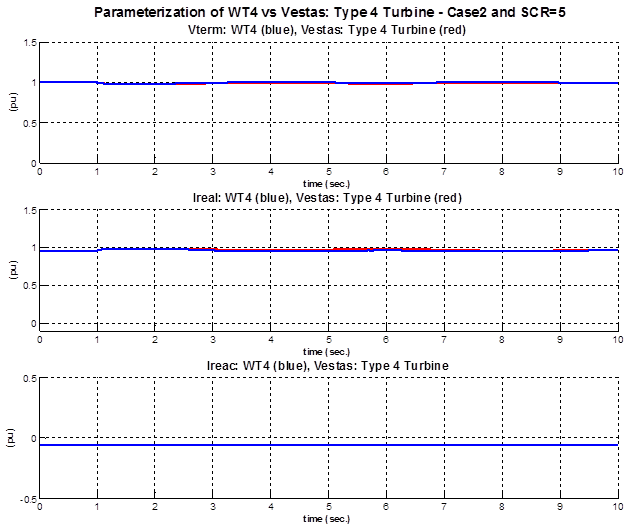
Parameterization of WT4 vs Vestas: Type IV – Case 2 and SCR=10
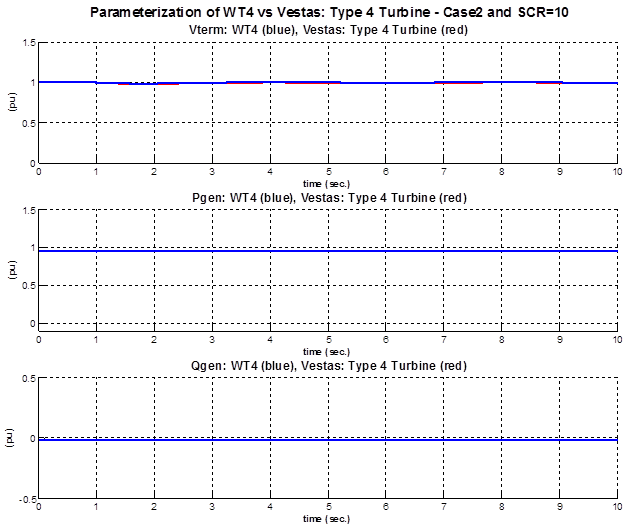
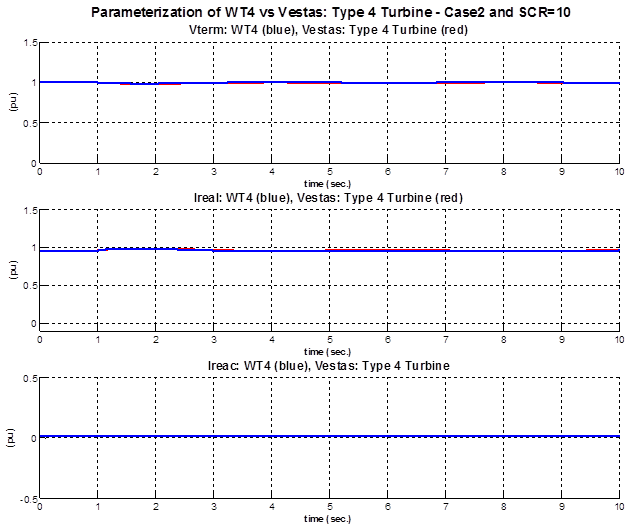
Parameterization: Case 3 – Over-Frequency Event
Parameterization of WT4 vs Vestas: Type IV – Case 3 and SCR=5
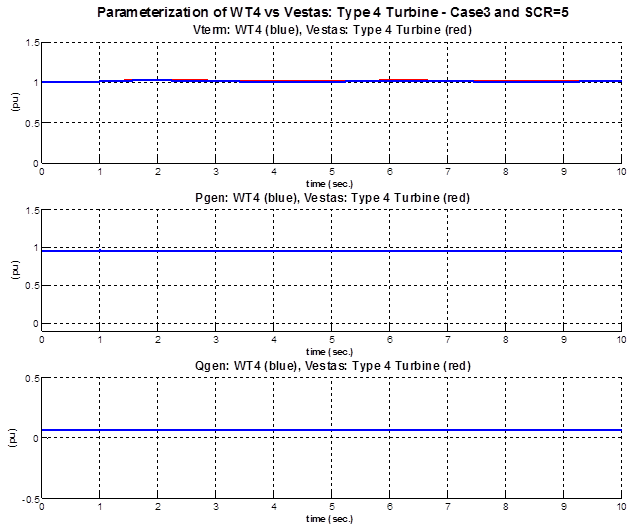
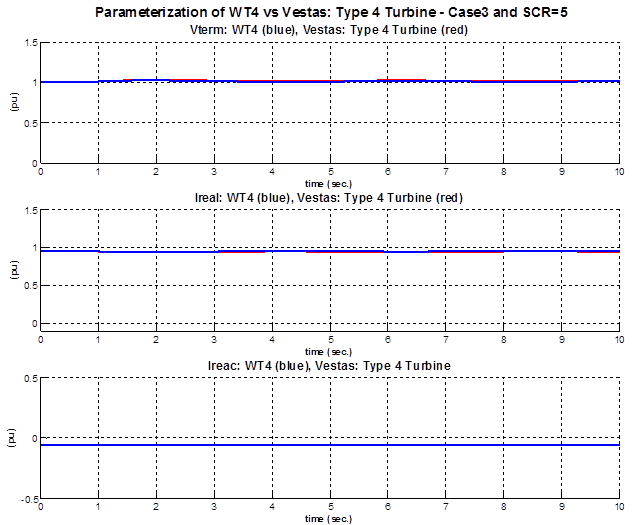
Parameterization of WT4 vs Vestas: Type IV – Case 3 and SCR=10

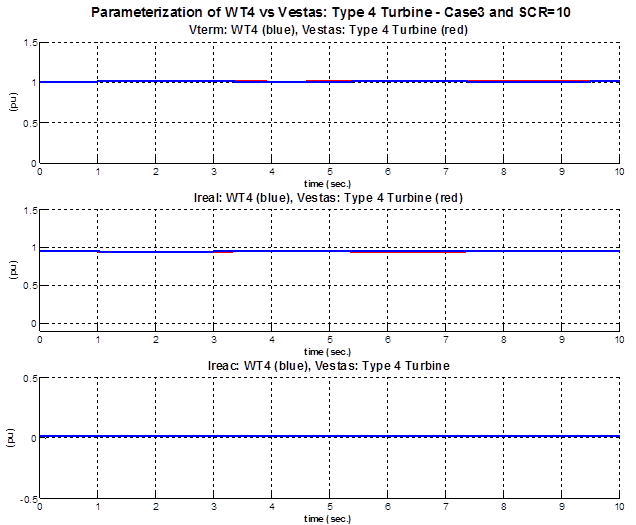
Results Validation
For cases 2 and 3 (over frequency and under frequency events), the response of the generic model matches the response of the VSM in the frequency range of interest. However, for case 1 (fault event), the response of the generic model matches the response of the VSM poorly. In other words, while the generic models are a good representation of the Vestas: Type 4 VSM behavior during frequency events, they are rather a poor alternative for severe fault events.
Vendor Specific Model Validation
The dynamic Low Voltage Right Through (LVRT) performance during different residual voltage levels and dip durations is documented in this section. Specifically, detailed PSCAD model behavior is compared against the vendor specific PSSE implementation of type 4 turbines.
LVRT Performance During a 0.9 pu Residual Voltage and a Dip Duration of 0.5 seconds
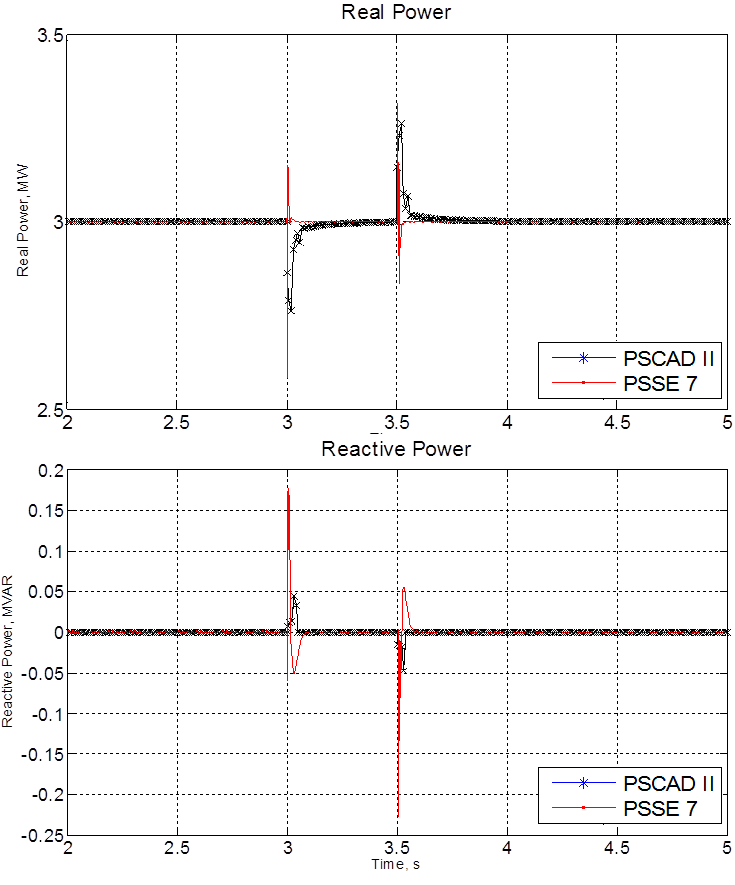
Active power and reactive power validation
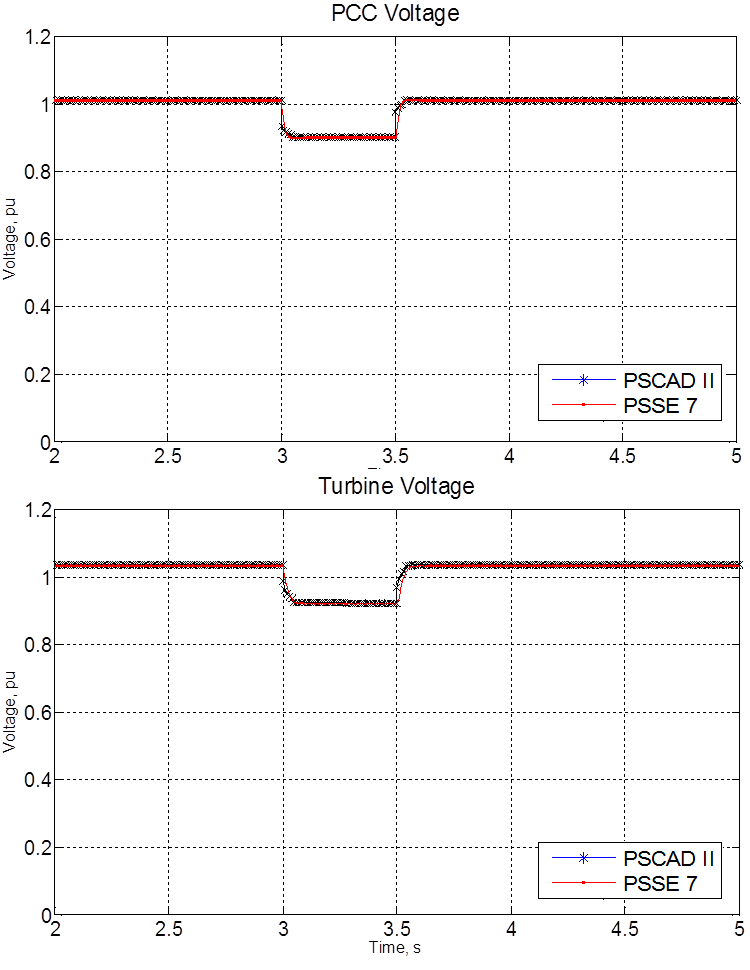
Stator voltage and PCC voltage validation
LVRT Performance During a 0.5 pu Residual Voltage and a Dip Duration of 0.5 seconds
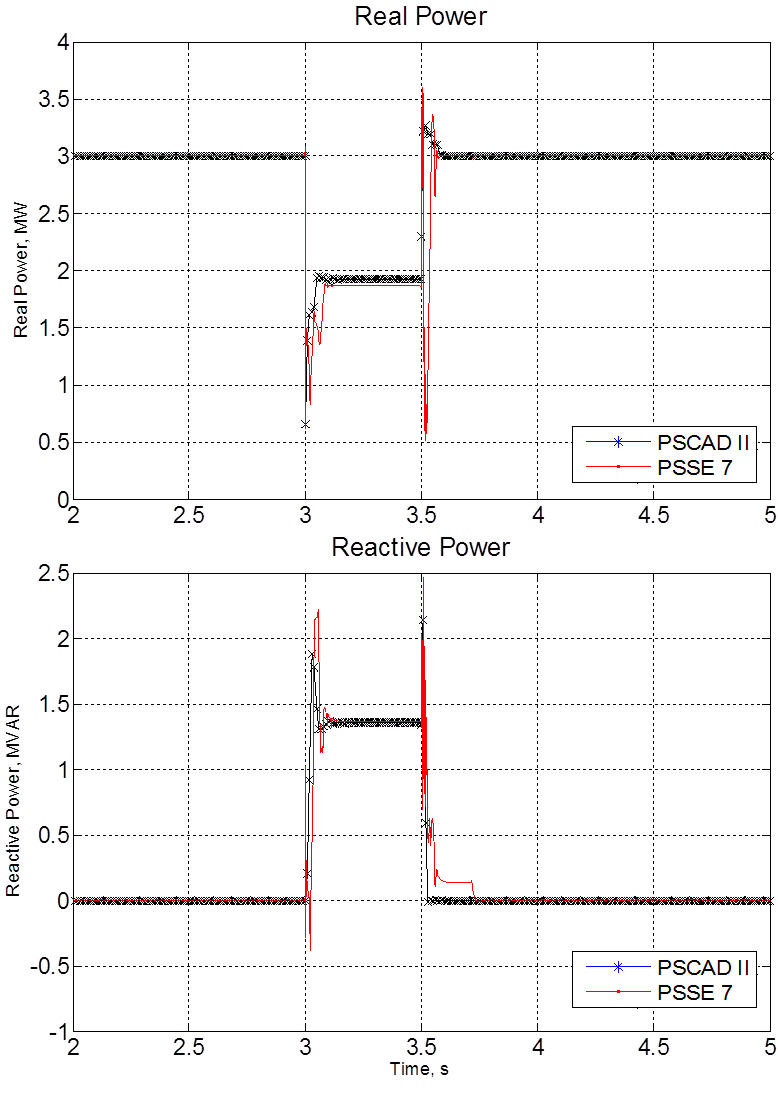
Active power and reactive power validation
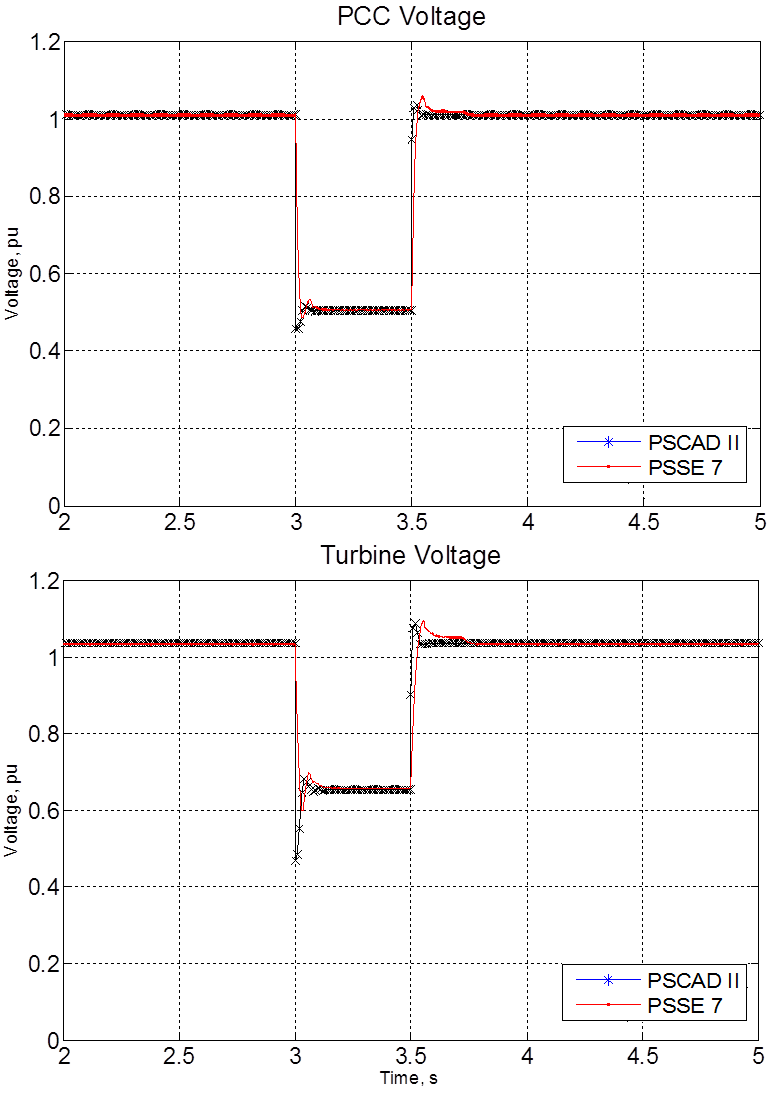
Stator voltage and PCC voltage validation
LVRT Performance During a 0.2 pu Residual Voltage and a Dip Duration of 0.3 seconds
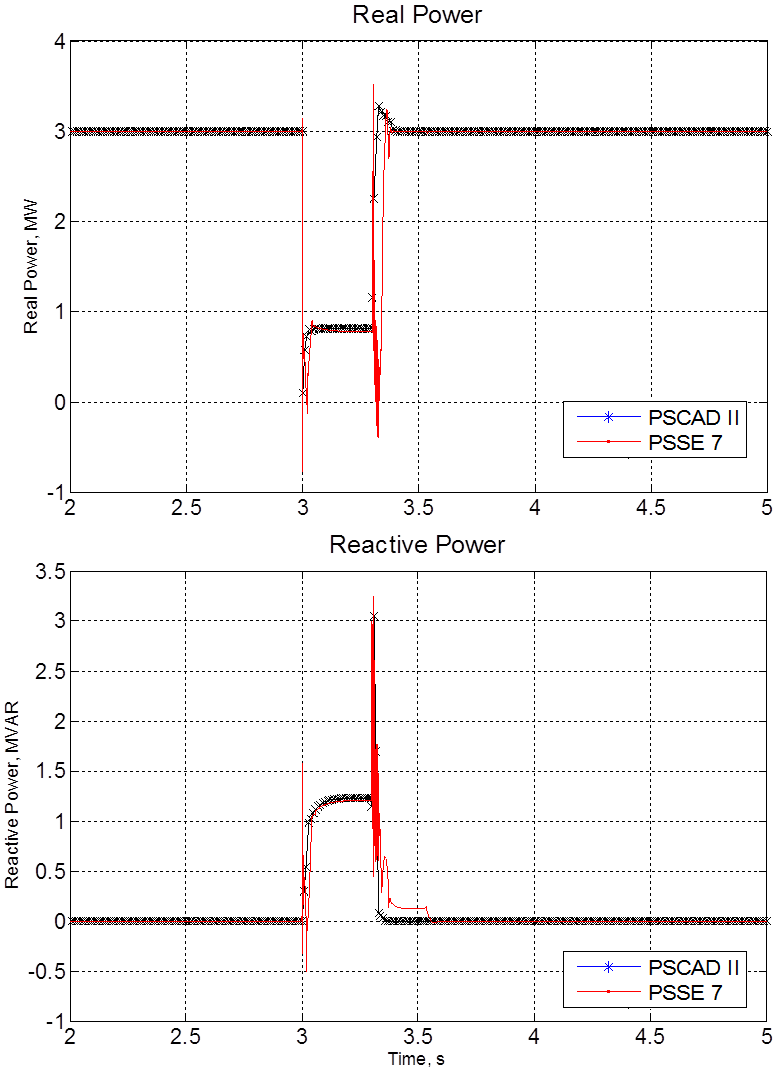
Active power and reactive power validation
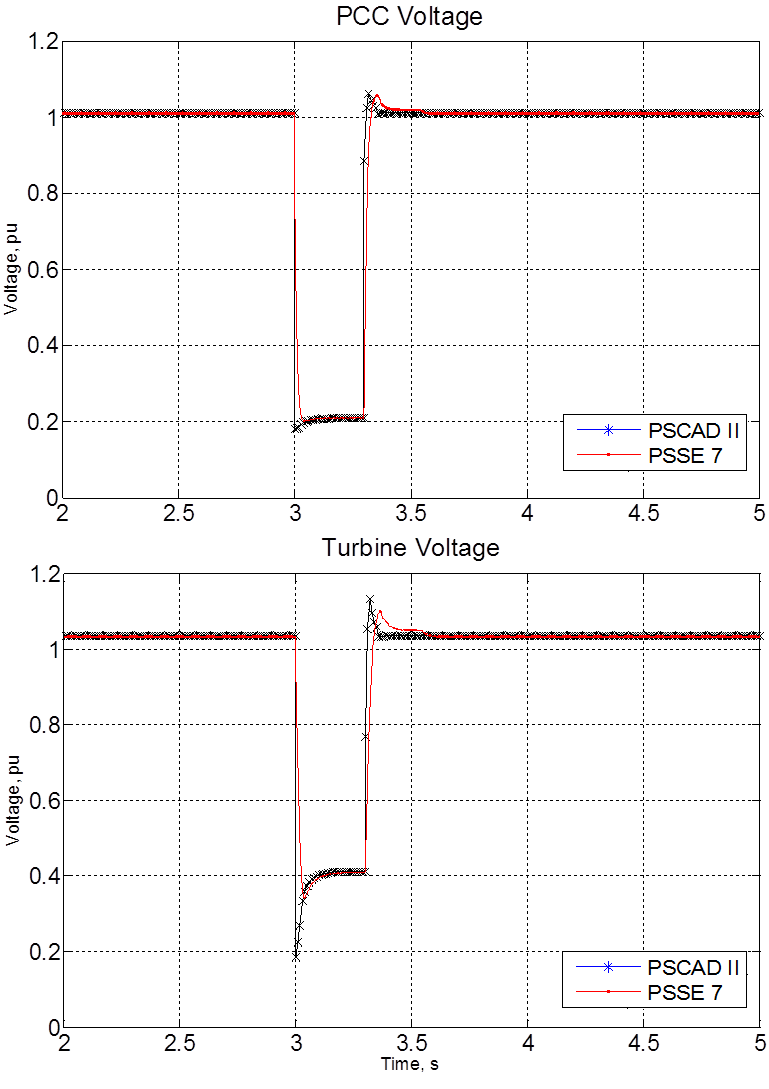
Stator voltage and PCC voltage validation
